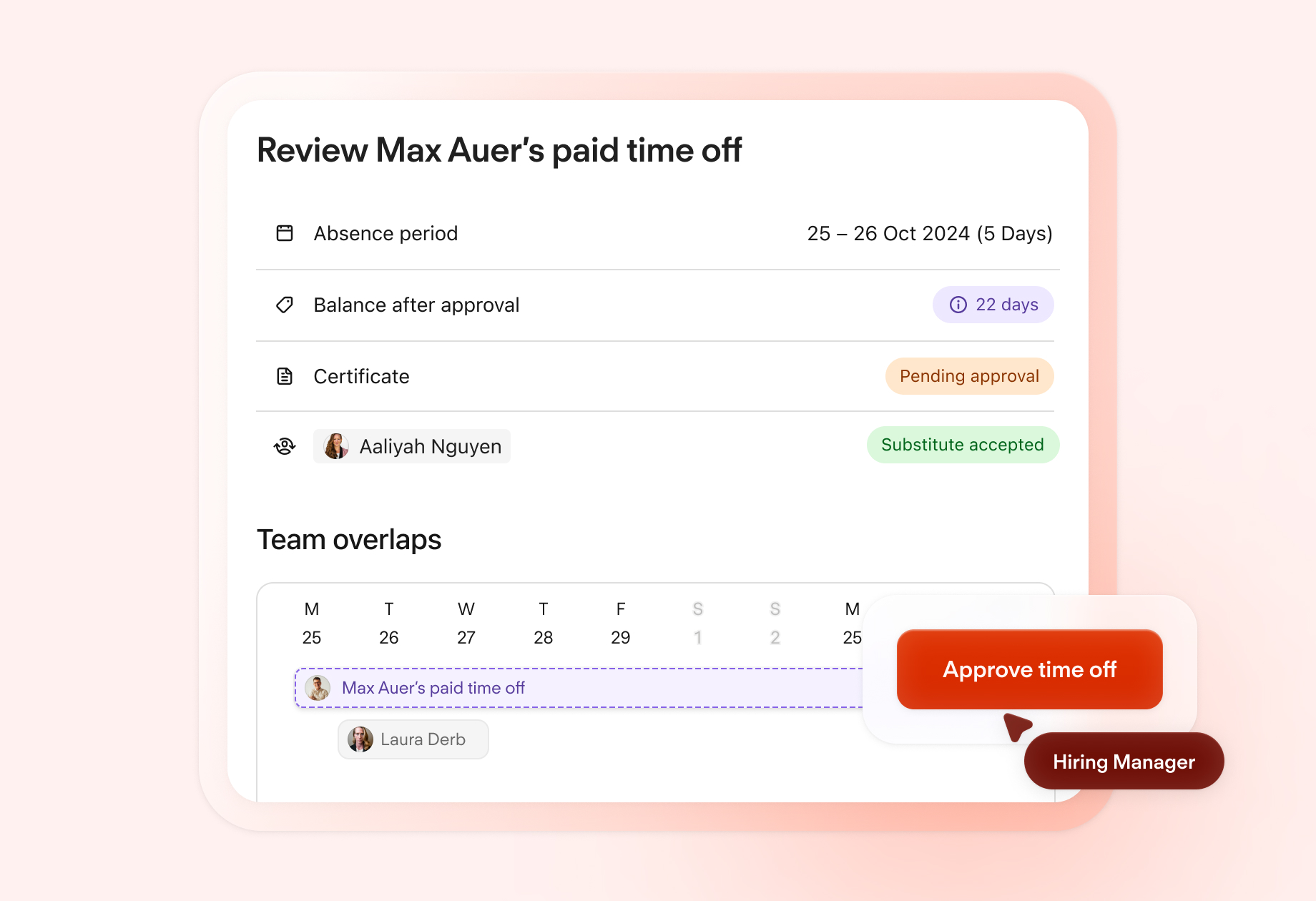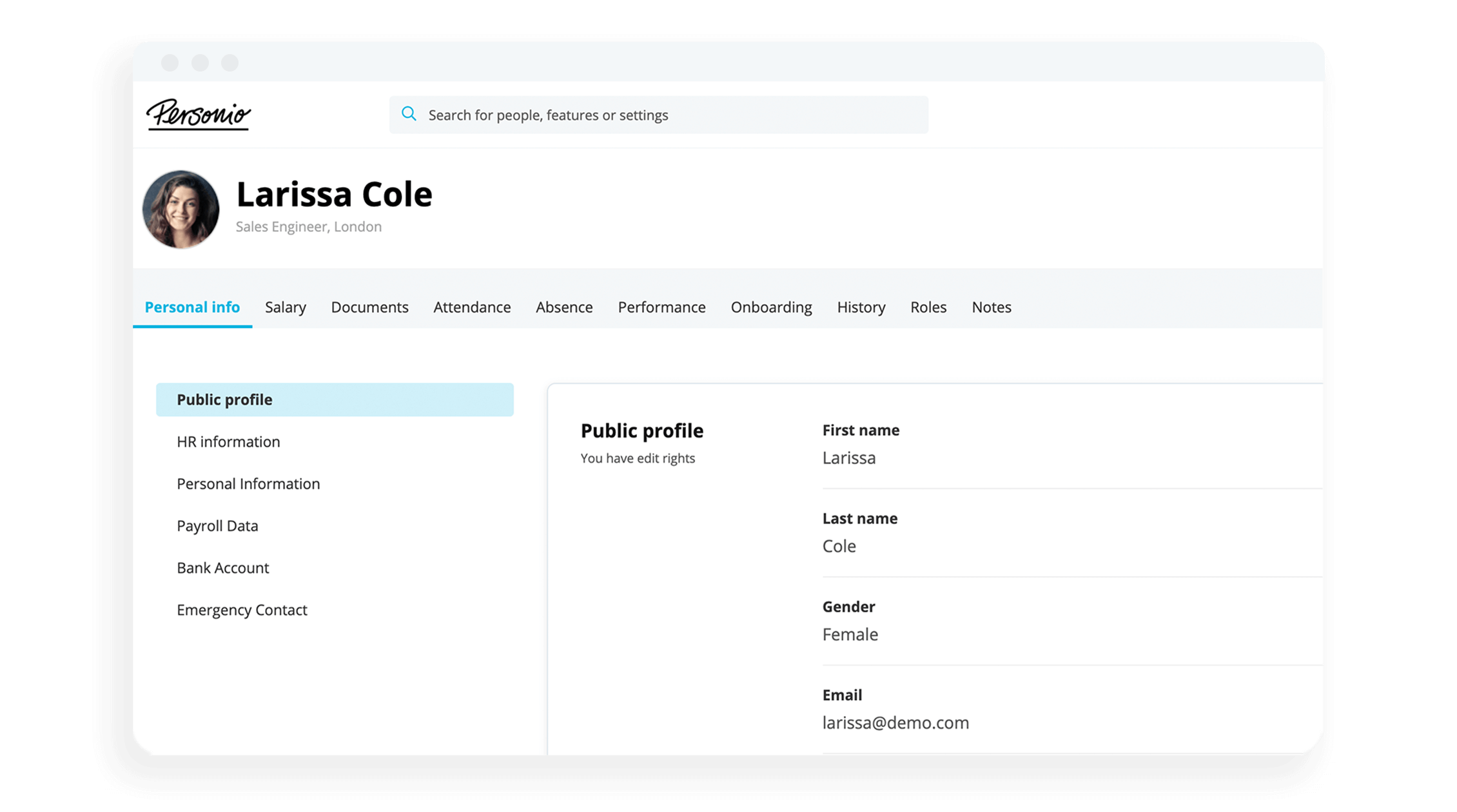Types Of Discrimination: What Every Employer Should Know

Which types of discrimination should every employer know? Generally, you should already be aware of The Equality Act of 2010, which defines workplace discrimination and provides guidelines to employers on how to deal with discrimination, harassment and victimisation.
Under the Equality Act, there are four main types of discrimination: direct and indirect discrimination, harassment and victimisation. In this article, we’ll break down each type in detail and how they can reveal themselves in the workplace.
One place for all your policies and key employee data with Personio.What Are The Four Types Of Discrimination?
The four types of discrimination, as outlined by the Equality Act of 2020, include:
Direct discrimination
Indirect discrimination
Harassment
Victimisation
Did you know? 36% of adults in the UK state that they have experienced workplace discrimination. That’s more than a third of the entire workforce! Let’s talk a bit more in detail about each of discrimination an employee may (but hopefully does not) encounter.
1. Direct Discrimination
Direct discrimination happens when an employee is being treated worse than another employee because of a certain disability or underlying reason. There can be multiple reasons, but the most common ones are age, race, creed or sexual orientation.
An example would be a tech company not hiring an older person because they believe the candidate isn’t tech-savvy due to their age. Or a car repair shop not hiring a female mechanic because they believe they’re not physically strong enough to withstand the physical labour of the job.
On top of this, direct discrimination also has two additional facets:
Discrimination by association: This happens when a person is treated poorly because they’re connected with someone who has a certain disability, even if they themselves don’t have it.
Discrimination by perception: This occurs when an individual or an organisation believes you have a certain disability when you don’t have it.
2. Indirect Discrimination
Indirect discrimination happens when an organisation treats everyone the same, but the requirements and practices they put in place disadvantage a certain group of people.
Whether this is done with intent does not matter, so organisations need to be extremely careful (and inclusive) when setting certain requirements.
An example would be a company that’s hiring an individual and putting the requirement of having a driver’s licence for a job that doesn’t require driving.
3. Harassment
Harassment happens when an employee experiences uninvited behaviour from others in the organisation. This type of behaviour usually violates the dignity of the individual by having them experience intimidation, degradation, humiliation or any kind of offensive behaviour.
The most common harassment examples would be bullying, having an employee experience unpleasant and derogatory nicknames or having someone ask inappropriate questions.
4. Victimisation
Victimisation happens when an employee becomes the target of harmful behaviour because they made a claim about workplace discrimination, gave evidence about discrimination happening in the workplace or raised a concern about discriminatory practices at work.
As far as types of discrimination are concerned, victimisation can be the most toxic. Individuals may be marked as “troublemakers” by the organisation.
An example might be someone who raised concerns about a discriminatory practice in the company and then they would be:
Denied the company’s service in one way or another (if they’re a customer)
Denied a promotion or even be demoted from their current role
Isolated from the rest of their colleagues and slowly expelled from the company
What Are Protected Characteristics?
When the Equality Act became law in 2010, it defined the nine protected characteristics that people shouldn’t be discriminated against. The nine protected characteristics include:
Age
Disability
Gender reassignment
Marriage and civil partnership
Pregnancy and maternity
Race
Religion or belief
Sex
Sexual orientation
No individual in the workplace should be discriminated on the basis of any of the nine protected characteristics. And employers should double-check their policies and practices to ensure that there’s no indirect discrimination on any of the above-mentioned points.
On top of that, they should have policies in place that allow and support any employee that wants to speak up on any discriminatory behaviours happening in the workplace.
Types of Discrimination and UK Law
There are cases when direct or indirect discrimination is lawful (legally called “justification”). Essentially, it involves having the employer objectively justify certain actions or requirements.
For example, if you’re employing a driver for one of your delivery trucks, you may require the candidates to have a valid driving licence since they can’t legally perform the job without one. It may appear as indirect discrimination, but it fulfils a core function of a role.
Introducing Modern Holiday Planning & Management

Seamless absence tracking that scales with your headcount. See how Personio can help your team with absences today.
Book Your DemoFrequently Asked Questions About Types of Discrimination
The following section contains answers to the five most frequently asked questions about discrimination in the workplace:
What Is Discrimination?
Discrimination is unfair treatment of a certain individual or group of people based on certain characteristics such as age, sexual orientation, race etc.
What Is The Most Common Form Of Discrimination?
The most common form of discrimination is indirect discrimination.
What Is The Most Common Reason For Discrimination?
The most common reason for discrimination is age (affecting both the younger and the older employees).
What Are The 9 Types Of Discrimination?
According to the Equality Act of 2010, there are nine protected characteristics that employees shouldn’t be discriminated against. They are:
Age
Disability
Gender reassignment
Marriage and civil partnership
Pregnancy and maternity
Race
Religion or belief
Sex
Sexual orientation
How Many Types Of Discrimination Are There?
There are four main types of discrimination: Direct discrimination, indirect discrimination, harassment and victimisation.
Everything You Should Know About Discrimination As An Employer
Discrimination in the workplace can become a big problem for some organisations. To prevent it, implement a Digital Employee File feature to keep all your employee data and records up to date. With it, you can store all data in a single place, have centralised access to all documents and all in a legally-compliant fashion.

